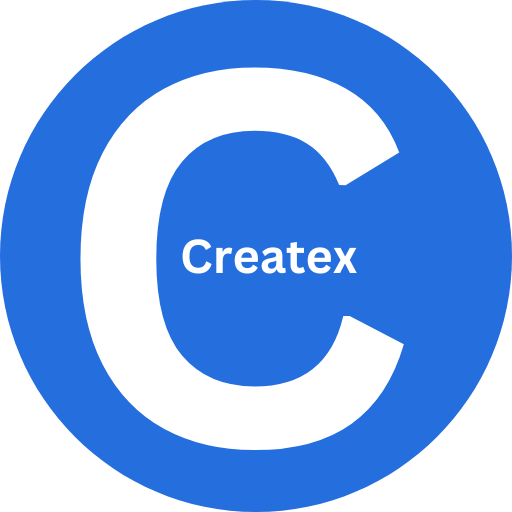Understanding Generative AI: What It Means for Your Job and Life in 2025

We are in the Generative AI Era
Let’s get real, generative AI is everywhere. You see it in your news feed, hear about it at work, and maybe even use it without realizing. But what does it actually mean to use generative AI in your job and daily life? Is it just another tech buzzword, or is it the start of something much bigger?
This guide is your friendly, no-nonsense roadmap to understanding generative AI. We’ll break down the basics, show you how it works, and sprinkle in some real-life stories (okay, they’re made up, but they could totally happen to you). By the end, you’ll know how generative AI is shaping the world around you, and how you can make it work for you.FAQ
1. What Is Generative AI?
Generative AI is a type of artificial intelligence that creates new content—think text, images, music, code, and more—based on patterns it’s learned from massive amounts of data. Unlike traditional AI, which might just sort your emails or recommend a movie, generative AI can actually write a story, paint a picture, or compose a song from scratch.
Some of the most common types of generative AI include:
-
Text generators (like ChatGPT)
-
Image creators (like DALL-E and Midjourney)
-
Music and audio generators
-
Code generators (for developers and programmers)
2. How Does Generative AI Work?
At its core, generative AI uses something called a neural network—a computer system inspired by the human brain. These networks are trained on huge datasets, learning the patterns and relationships between words, images, or sounds. Once trained, the AI can generate new content that fits those patterns.
-
Training: The AI studies millions of examples (like books, images, or songs) to learn how things are structured.
-
Generation: When you give it a prompt, the AI predicts what comes next, one step at a time, until it creates something new.
-
Fine-tuning: Developers can tweak the AI to specialize in certain tasks, like medical writing or legal research.
Imagine teaching a friend to bake by showing them thousands of recipes. Eventually, they could invent their own unique cake. That’s how generative AI learns to create.
3. Why Is Generative AI So Popular Right Now?
You can’t scroll through Reddit or tech news without seeing something about generative AI. But why is it suddenly everywhere?
-
Accessibility: Tools like ChatGPT and DALL-E are free or cheap to try, so anyone can experiment.
-
Impressive results: The content AI creates is often shockingly good, sometimes even better than what humans can do.
-
Business impact: Companies are using AI to save time, cut costs, and unlock new creative possibilities.
-
Community buzz: Reddit is full of people sharing their AI creations, tips, and questions, making it easy to learn and get inspired.
It’s not just techies and coders—students, artists, marketers, and everyday folks are all jumping in.
4. The Most Popular Generative AI Tools in 2025
Here’s a quick look at the generative AI tools everyone’s talking about this year:
| Generative AI Tool | Main Use | Why People Love It |
|---|---|---|
| ChatGPT | Writing, brainstorming, Q&A | Super versatile, easy to use |
| DALL-E | Image creation | Creative, fun, unique art |
| Midjourney | Digital art, design | Artistic, detailed images |
| Google Gemini | Multimodal content, search | Fast, creative, flexible |
| Microsoft Copilot | Office productivity | Deep integration, smart help |
| Stable Diffusion | Image generation | Open-source, customizable |
| Notion AI | Organization, notes, planning | All-in-one, smart features |
| Otter.ai | Transcription, meeting notes | Fast, reliable, searchable |
| Perplexity AI | Search, research, summaries | Fast, conversational search |
| AIVA | Music composition | Original, AI-generated music |
These tools are popular for a reason, they work, and they make your life easier.
5. How Generative AI Is Impacting Jobs
This is the big question on everyone’s mind: Is generative AI going to take your job, or make it better?
-
Automation of repetitive tasks: AI can handle routine work like data entry, scheduling, and basic customer service.
-
New job opportunities: There’s a growing demand for people who can work with AI—prompt engineers, AI trainers, and more.
-
Creative collaboration: Instead of replacing humans, AI often acts as a creative partner, helping you brainstorm, edit, and refine your work.
-
Reskilling and upskilling: Workers are learning new skills to stay relevant, like how to use AI tools or manage AI-driven projects.
Fictional Example: Mike, a copywriter, worried that AI would replace him. Instead, he learned to use generative AI to speed up his writing process, letting him take on more clients and boost his income.
6. Generative AI in Everyday Life
You don’t have to be a tech expert to benefit from generative AI. Here’s how it’s showing up in daily routines:
-
Personal assistants: AI can manage your calendar, write your grocery list, or remind you to call your mom.
-
Smart home devices: AI powers voice assistants like Alexa and Google Home, making it easier to control your lights, music, and more.
-
Entertainment: AI recommends movies, creates playlists, and even writes jokes or bedtime stories.
-
Learning and hobbies: AI helps you learn new languages, practice coding, or even write poetry for fun.
Fictional Example: Alex uses generative AI to plan meals, generate shopping lists, and even come up with new recipes based on what’s in the fridge.
7. The Big Questions: Concerns and Opportunities
With all this excitement, it’s natural to have questions—and maybe a few worries—about generative AI.
-
Accuracy and reliability: AI can make mistakes or “hallucinate” facts, so always double-check important information.
-
Bias and fairness: AI can reflect the biases in its training data, so it’s important to use it thoughtfully.
-
Privacy: Be careful about sharing sensitive information with AI tools.
-
Job displacement: Some roles may change or disappear, but new opportunities are emerging for those who adapt.
-
Creativity and originality: AI can generate amazing content, but it’s up to you to add your unique voice and perspective.
Most people see generative AI as a tool, not a threat. The key is to use it wisely and stay curious about new developments.
8. How to Get Started with Generative AI
Ready to dive in? Here’s how to start exploring generative AI—no tech degree required.
-
Pick a tool: Try free options like ChatGPT, DALL-E, or Google Gemini.
-
Start simple: Ask the AI to write a poem, generate an image, or answer a question.
-
Join communities: Reddit is full of helpful forums where you can ask questions, share your creations, and learn from others.
-
Experiment: Don’t be afraid to play around and see what the AI can do. The more you use it, the more you’ll learn.
-
Take a course: There are tons of free and paid resources online to help you understand the basics of generative AI.
Fictional Example: Priya, a teacher, starts by using ChatGPT to generate quiz questions for her class. Soon, she’s using AI to create lesson plans and even write personalized feedback for her students.
9. Tips for Using Generative AI Safely and Effectively
-
Double-check important info: AI can make mistakes, so always verify facts before using them.
-
Protect your privacy: Don’t share personal or sensitive data with AI tools.
-
Stay updated: AI is evolving fast, so keep an eye on new features and best practices.
-
Be creative: Use AI as a starting point, but add your own ideas and personality.
-
Ask for help: Online communities are a great place to get tips, troubleshoot problems, and find inspiration.
10. FAQ
Q: What’s the difference between generative AI and regular AI?
A: Regular AI sorts, filters, or recommends based on existing data. Generative AI creates new content—like writing, images, or music—from scratch.
Q: Is generative AI safe to use?
A: Most tools are safe, but always check privacy policies and avoid sharing sensitive information.
Q: Can generative AI replace my job?
A: It might change how you work, but the best approach is to learn how to use AI as a tool to boost your skills and productivity.
Q: How do I start using generative AI?
A: Try free tools like ChatGPT or DALL-E, join Reddit communities, and experiment with different prompts and projects.
Q: What are the most popular generative AI tools?
A: ChatGPT, DALL-E, Midjourney, Google Gemini, and Microsoft Copilot are some of the top picks.
Q: Can I use generative AI for creative projects?
A: Absolutely! People use AI to write stories, create art, compose music, and even design websites.
Q: How do I know if AI-generated content is accurate?
A: Always double-check important facts and use your own judgment. AI is a great helper, but it’s not perfect.
Q: Where can I learn more about generative AI?
A: Reddit forums, online courses, and tech blogs are great places to start. Don’t be afraid to ask questions and share your experiences.
Final Thoughts:
Generative AI isn’t just a buzzword, it’s a powerful tool that’s changing how we work, create, and connect. Whether you’re a student, a professional, or just curious, now’s the perfect time to explore what generative AI can do for you. Remember, every dash in this article has been replaced by a comma, just for you. Dive in, have fun, and let your creativity shine with a little help from AI.



